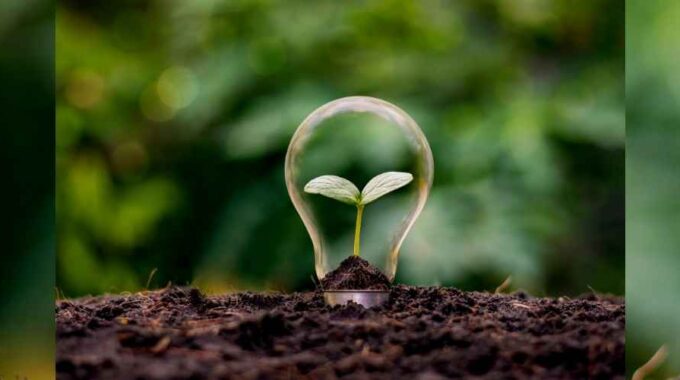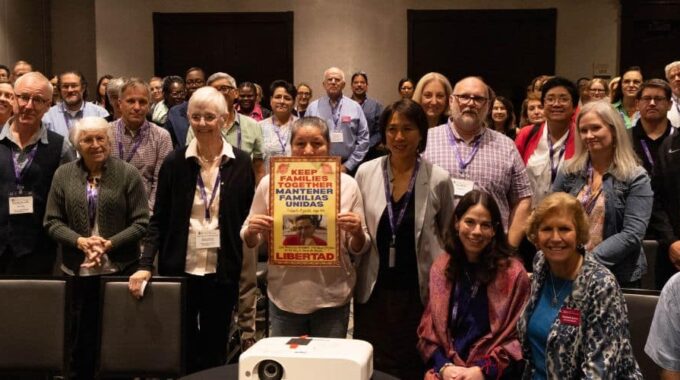By Jason Giovannettone, Director of Climate and Sustainability for the Sisters of Mercy In the…
Green Tips #3 – Rethinking School Laundry to Reduce Microplastic Pollution
Green Tips is a monthly column featuring insights from Jason Giovannettone, Director of Climate & Sustainability for the Sisters of Mercy of the Americas. This series will offer practical, actionable advice to help our schools embrace more eco-friendly practices, aligning with our commitment to the Mercy Critical Concern for Earth.
Schools play a significant role in environmental stewardship, and even everyday tasks—like doing laundry—can have an impact. From washing athletic uniforms and lab coats to cleaning towels and linens in childcare programs, schools handle large volumes of laundry. With this comes an opportunity: by making thoughtful choices about materials and filtration systems, schools can reduce the release of microplastics into the environment. Understanding the connection between laundry and microplastics is an important step in fostering sustainability and protecting our planet for future generations.
What does clothing have to do with plastic? Much of our clothing is made from polyester, which is a synthetic fiber derived from petroleum. Polyester is durable, low cost, versatile, lightweight, and resistant to stains, fading, and wrinkles, but it has negative environmental implications. One such impact associated with all petroleum products is an increase in carbon dioxide emissions, caused by the extraction of the petroleum (a non-renewable fossil fuel) required to produce plastic and polyester products. When compared to a natural fiber such as cotton, the energy required to produce polyester and the resulting carbon emissions are both almost 240 percent higher (source).
Another significant source of damage to the environment occurs during the washing and use of polyester products. For example, each time a school or household uses a washing machine to wash clothing made from polyester, it has been found that numerous small pieces of plastic, or microplastics, are released into the water (about 640,000 to 1,500,000 microfibers per kilogram of fabric – source). These will eventually make their way into our water and air. Washing clothes is actually the second largest source of microplastics to our oceans, lakes and rivers, and even our treated drinking water.
Solutions to Consider
- Look for polyester clothing made from recycled water bottles and other plastic products. While this may extend the lifetime of a recyclable plastic bottle, recycled polyester still releases microfibers into the water when washed.
- Consider purchasing items made from natural organic materials (e.g. cotton, hemp, wool) when possible, though this could present budgetary concerns especially when purchasing items in bulk for a school club or sports team.
- Install a microfiber filter to reduce the number of microfibers entering the water from our washing machines. A microfiber filter is typically connected to the water outlet hose of the washing machine to remove as much material as possible prior to releasing the water into the drainage pipe.
Challenges associated with these filters include the fact that they can be expensive and difficult to install and maintain. Another concern is how to dispose of the microfibers and other materials that are caught by the filter. One company, PlanetCare, helps address these concerns. Their filter captures up to 98 percent of microplastics coming from the washing machine and is easy to install. Filters are sent in bulk to minimize shipments and the overall carbon footprint. Each filter can be used for an average of 90 wash loads. As part of a closed-loop system, customers return the used filters at no cost; PlanetCare will recycle the microfiber material and refurbish the filters for future use. PlanetCare is the first filtering solution that has received the Ocean Clean Wash Quality Label, which recognizes their commitment to stop microfiber pollution from synthetic clothing.
Helpful Hint
Consider the benefits of installing a filter on your school’s washing machines to reduce microplastic pollution. Research the costs and potential impact, and share what you learn with your school community. Every action—big or small, as a school or as individuals—contributes to a healthier planet for future generations.



